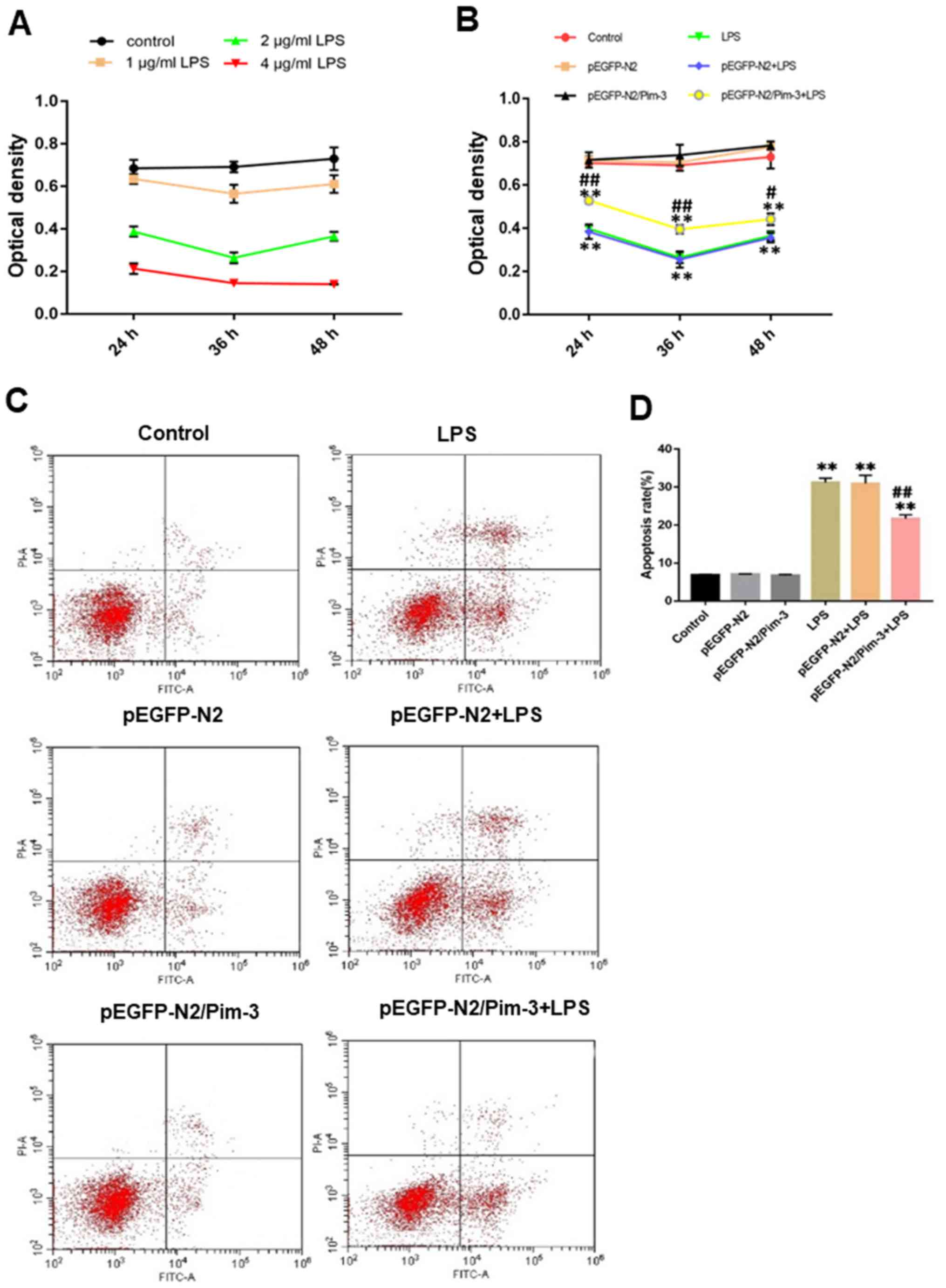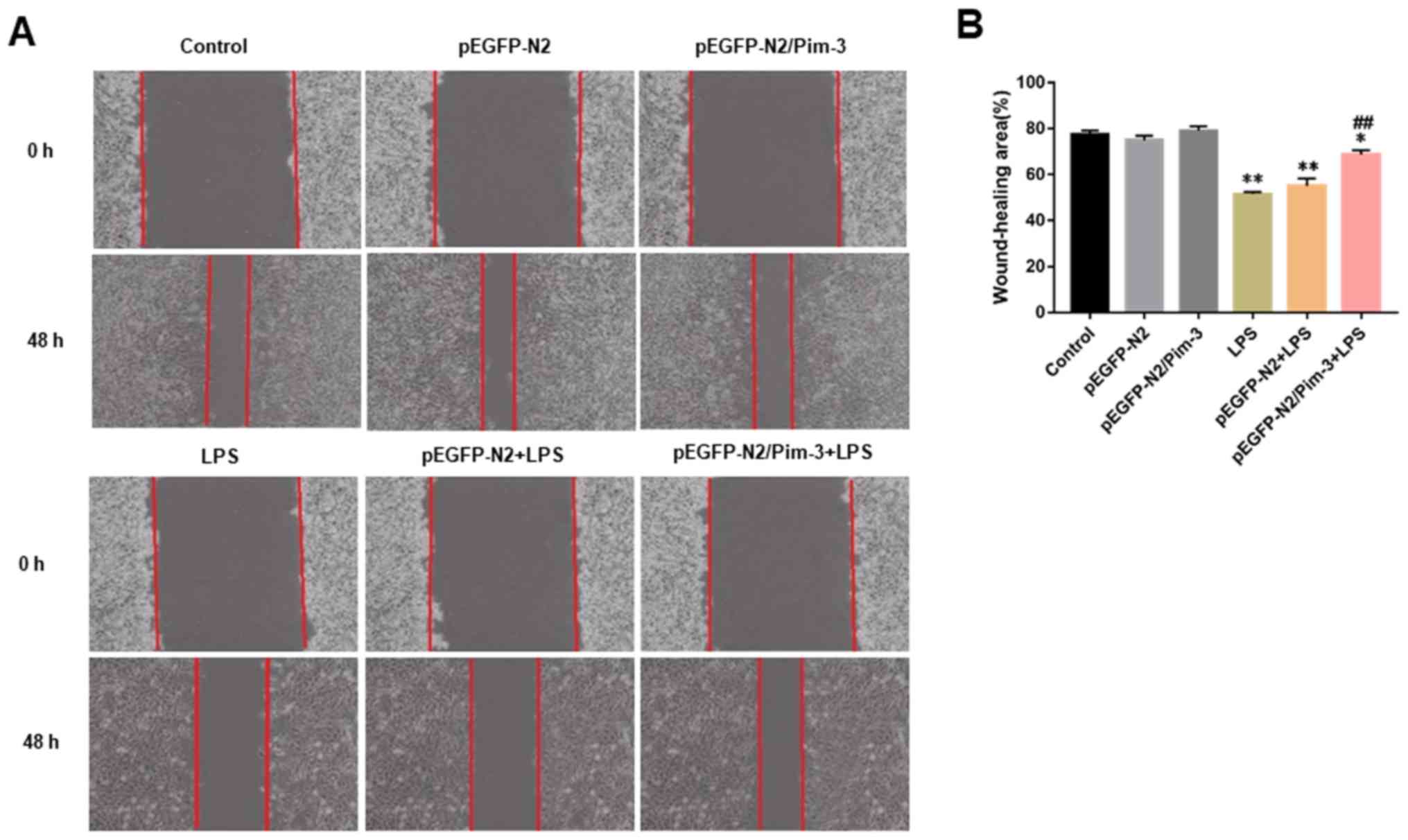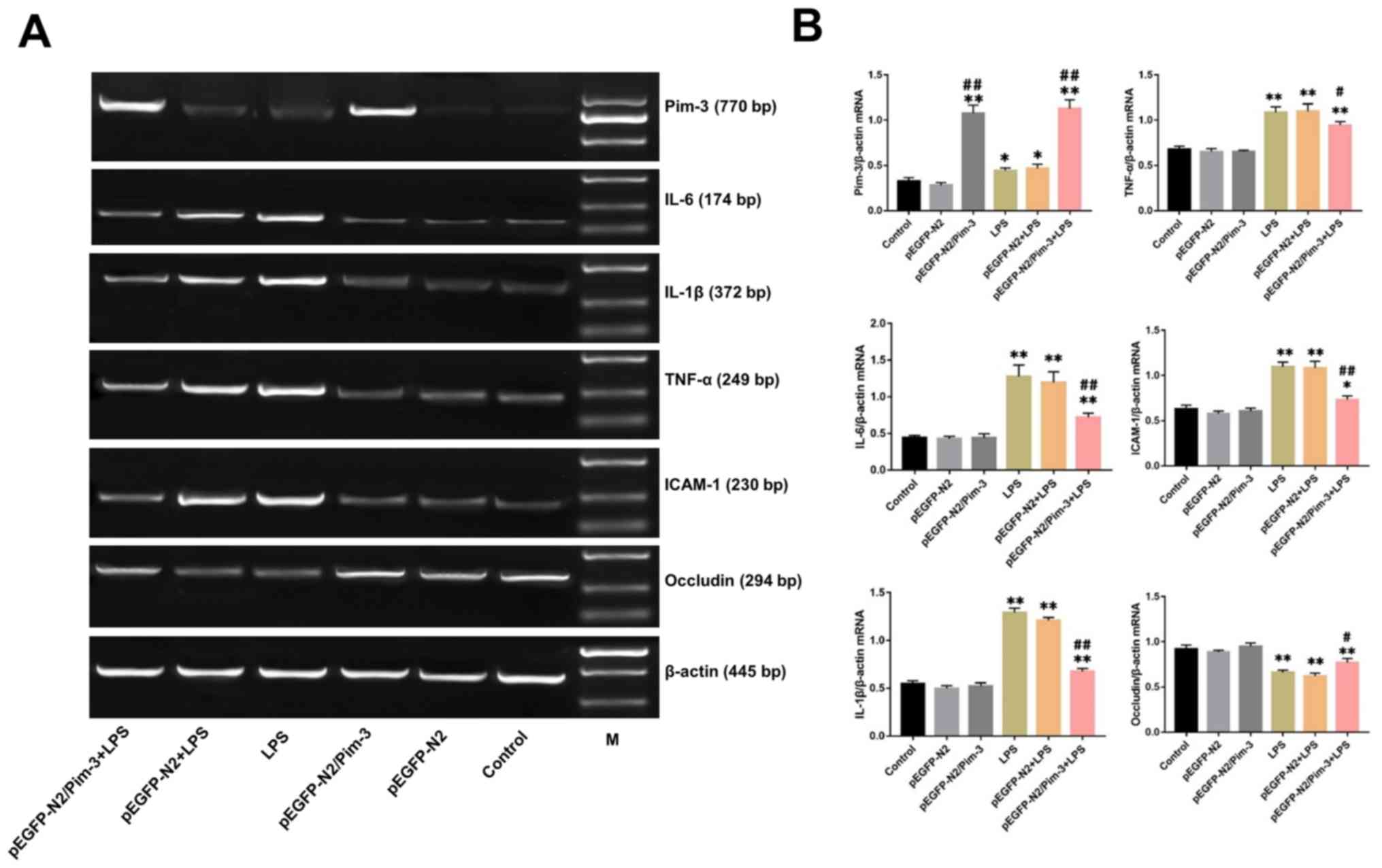|
1
|
Lankisch PG, Apte M and Banks PA: Acute
pancreatitis. Lancet. 386:85–96. 2015. View Article : Google Scholar : PubMed/NCBI
|
|
2
|
Zerem E: Treatment of severe acute
pancreatitis and its complications. World J Gastroenterol.
20:13879–13892. 2014. View Article : Google Scholar : PubMed/NCBI
|
|
3
|
Jeong YK, Lee S, Lim JW and Kim H:
Docosahexaenoic acid inhibits cerulein-induced acute pancreatitis
in rats. Nutrients. 9:E7442017. View Article : Google Scholar : PubMed/NCBI
|
|
4
|
Wang G, Liu Y, Zhou SF, Qiu P, Xu L, Wen
P, Wen J and Xiao X: Effect of somatostatin, ulinastatin and
gabexate on the treatment of severe acute pancreatitis. Am J Med
Sci. 351:506–512. 2016. View Article : Google Scholar : PubMed/NCBI
|
|
5
|
Murata A, Ohtani M, Muramatsu K and
Matsuda S: Effects of proton pump inhibitor on outcomes of patients
with severe acutepancreatitis based on a national administrative
database. Pancreatology. 15:491–496. 2015. View Article : Google Scholar : PubMed/NCBI
|
|
6
|
Nesseler N, Ross JT and Mallédant Y:
Infected necrotizing pancreatitis: Antibiotic administration
remains the first step. Lancet. 391:2501–2502. 2018. View Article : Google Scholar : PubMed/NCBI
|
|
7
|
Gorskii VA, Agapov MA, Khoreva MV, Petrov
VA, Kravchenko AY and Battaev AI: Effect of lornoxicam therapy on
expression of TLR2 and TLR4 mRNA during systemic complications of
acute pancreatitis. Bull Exp Bio Med. 158:13–15. 2014. View Article : Google Scholar
|
|
8
|
Sherman MH, Yu RT, Engle DD, Ding N,
Atkins AR, Tiriac H, Collisson EA, Connor F, Van Dyke T, Kozlov S,
et al: Vitamin D receptor-mediated stromal reprogramming suppresses
pancreatitis and enhances pancreatic cancer therapy. Cell.
159:80–93. 2014. View Article : Google Scholar : PubMed/NCBI
|
|
9
|
Hua J, He ZG, Qian DH, Lin SP, Gong J,
Meng HB, Yang TS, Sun W, Xu B, Zhou B and Song ZS: Angiopoietin-1
gene- modified human mesenchymal stem cells promote angiogenesis
and reduce acute pancreatitis in rats. Int J Clin Exp Pathol.
7:3580–3595. 2014.PubMed/NCBI
|
|
10
|
Liu J, Qu X, Shao L, Hu Y, Yu X, Lan P,
Guo Q, Han Q, Zhang J and Zhang C: Pim-3 enhances melanoma cell
migration and invasion by promoting STAT3 phosphorylation. Cancer
Biol Ther. 19:160–168. 2018. View Article : Google Scholar : PubMed/NCBI
|
|
11
|
Narlik-Grassow M, Blanco-Aparicio C and
Carnero A: The PIM family of Serine/Threonine kinases in cancer.
Med Res Rev. 34:136–159. 2014. View Article : Google Scholar : PubMed/NCBI
|
|
12
|
Fujii C, Nakamoto Y, Lu P, Tsuneyama K,
Popivanova BK, Kaneko S and Mukaida N: Aberrant expression of
serine/threonine kinase Pim-3 in hepatocellular carcinoma
development and its role in the proliferation of human hepatoma
cell lines. Int J Cancer. 114:209–218. 2005. View Article : Google Scholar : PubMed/NCBI
|
|
13
|
Li YY, Popivanova BK, Nagai Y, Ishikura H,
Fujii C and Mukaida N: Pim-3, a proto-oncogene with
serine/threonine kinase activity, is aberrantly expressed in human
pancreatic cancer and phosphorylates bad to block bad-mediated
apoptosis in human pancreatic cancer cell lines. Cancer Res.
66:6741–6747. 2006. View Article : Google Scholar : PubMed/NCBI
|
|
14
|
Popivanova BK, Li YY, Zheng H, Omura K,
Fujii C, Tsuneyama K and Mukaida N: Proto-oncogene, Pim-3 with
serine/threonine kinase activity, is aberrantly expressed in human
colon cancer cells and can prevent Bad-mediated apoptosis. Cancer
Sci. 98:321–328. 2007. View Article : Google Scholar : PubMed/NCBI
|
|
15
|
Mukaida N, Wang YY and Li YY: Roles of
Pim-3, a novel survival kinase, in tumorigenesis. Cancer Sci.
102:1437–1442. 2011. View Article : Google Scholar : PubMed/NCBI
|
|
16
|
Liu LM, Zhang JX, Wang XP, Guo HX, Deng H
and Luo J: Pim-3 protects against hepatic failure in
D-galactosamine (D-GalN)-sensitized rats. Eur J Clin Invest.
40:127–138. 2010. View Article : Google Scholar : PubMed/NCBI
|
|
17
|
Chen JY, Shen XW and Zhang JX: Protective
role of Pim-3 gene in intestinal mucosa damaged by burn or
lipopolysaccharide. Zhonghua Yi Xue Za Zhi. 87:2960–2964. 2007.(In
Chinese). PubMed/NCBI
|
|
18
|
Liu LH, Lai QN, Chen JY, Zhang JX and
Cheng B: Overexpression of pim-3 and protective role in
lipopolysaccharide-stimulated hepatic stellate cells. World J
Gastroenterol. 21:8858–8867. 2015. View Article : Google Scholar : PubMed/NCBI
|
|
19
|
Cai F, Cui N, Ma H, Wang X, Qiao G and Liu
D: Interleukin-10-1082A/G polymorphism is associated with the
development of acute pancreatitis in a Chinese population. Int J
Clin Exp Pathol. 8:15170–15176. 2015.PubMed/NCBI
|
|
20
|
Simsek O, Kocael A, Kocael P, Orhan A,
Cengiz M, Balci H, Ulualp K and Uzun H: Inflammatory mediators in
the diagnosis and treatment of acute pancreatitis: Pentraxin3,
procalcitonin and myeloperoxidase. Arch Med Sci. 14:288–296. 2018.
View Article : Google Scholar : PubMed/NCBI
|
|
21
|
Ge N, Xia Q, Yang ZH, Ding QF and Zeng Z:
Vascular endothelial injury and apoptosis in rats with severe acute
pancreatitis. Gastroenterol Res Pract. 2015:2350172015. View Article : Google Scholar : PubMed/NCBI
|
|
22
|
Pan YL: The effects of glycyrrhizin on
acute pancreatitis in mice. Eur Rev Med Pharmacol Sci.
18:3943–3947. 2014.PubMed/NCBI
|
|
23
|
Banks PA: Acute pancreatitis: Landmark
studies, management decisions, and the future. Pancreas.
45:633–640. 2016. View Article : Google Scholar : PubMed/NCBI
|
|
24
|
Li YY and Mukaida N: Pathophysiological
roles of Pim-3 kinase in pancreatic cancer development and
progression. World J Gastroenterol. 20:9392–9404. 2014.PubMed/NCBI
|
|
25
|
Zheng HC, Tsuneyama K, Takahashi H, Miwa
S, Sugiyama T, Popivanova BK, Fujii C, Nomoto K, Mukaida N and
Takano Y: Aberrant Pim-3 expression is involved in gastric
adenoma-adenocarcinoma sequence and cancer progression. J Cancer
Res Clin Oncol. 134:481–488. 2008. View Article : Google Scholar : PubMed/NCBI
|
|
26
|
Wang C, Li HY, Liu B, Huang S, Wu L and Li
YY: Pim-3 promotes the growth of human pancreatic cancer in the
orthotopic nude mouse model through vascular endothelium growth
factor. J Surg Res. 185:595–604. 2013. View Article : Google Scholar : PubMed/NCBI
|
|
27
|
Liang C, Yu XJ, Guo XZ, Sun MH, Wang Z,
Song Y, Ni QX, Li HY, Mukaida N and Li YY: MicroRNA-33a-mediated
downregulation of Pim-3 kinase expression renders human pancreatic
cancer cells sensitivity to gemcitabine. Oncotarget. 6:14440–14455.
2015. View Article : Google Scholar : PubMed/NCBI
|
|
28
|
Chen XY, Wang Z, Li B, Zhang YJ and Li YY:
Pim-3 contributes to radioresistance through regulation of the cell
cycle and DNA damage repair in pancreatic cancer cells. Biochem
Biophys Res Commun. 473:296–302. 2016. View Article : Google Scholar : PubMed/NCBI
|
|
29
|
Gregoric P, Sijacki A, Stankovic S,
Radenkovic D, Ivancevic N, Karamarkovic A, Popovic N, Karadzic B,
Stijak L, Stefanovic B, et al: SIRS score on admission and initial
concentration of IL-6 as severe acute pancreatitis outcome
predictors. Hepatogastroenterology. 57:349–353. 2010.PubMed/NCBI
|
|
30
|
De Waele JJ and Blot S: The value of IL-6
in predicting the severity of acute pancreatitis. J Clin
Gastroenterol. 41:5342007. View Article : Google Scholar : PubMed/NCBI
|
|
31
|
Sternby H, Hartman H, Johansen D,
Thorlacius H and Regnér S: IL-6 and CRP are superior in early
differentiation between mild and non-mild acute pancreatitis.
Pancreatology. 17:550–554. 2017. View Article : Google Scholar : PubMed/NCBI
|
|
32
|
Vonlaufen A, Apte MV, Imhof BA and
Frossard JL: The role of inflammatory and parenchymal cells in
acute pancreatitis. J Pathol. 213:239–248. 2007. View Article : Google Scholar : PubMed/NCBI
|
|
33
|
Rubant SA, Ludwig RJ, Diehl S, Hardt K,
Kaufmann R, Pfeilschifter JM and Boehncke WH: Dimethylfumarate
reduces leukocyte rolling in vivo through modulation of adhesion
molecule expression. J Invest Dermatol. 128:326–331. 2008.
View Article : Google Scholar : PubMed/NCBI
|
|
34
|
Dabrowski A, Osada J, Dabrowska MI,
Wereszczynska-Siemiatkowska U and Siemiatkowski A: Increased
expression of the intercellular adhesion molecule-1 (ICAM-1) on
peripheral blood neutrophils in acute pancreatitis. Adv Med Sci.
59:102–107. 2014. View Article : Google Scholar : PubMed/NCBI
|
|
35
|
Sun W, Watanabe Y and Wang ZQ: Expression
and significance of ICAM-1 and its counter receptors LFA-1 and
Mac-1 in experimental acute pancreatitis of rats. World J
Gastroenterol. 12:5005–5009. 2006. View Article : Google Scholar : PubMed/NCBI
|
|
36
|
Zhu HH and Jiang LL: Serum inter-cellular
adhesion molecule 1 is an early marker of diagnosis and prediction
of severe acute pancreatitis. World J Gastroenterol. 18:2554–2560.
2012. View Article : Google Scholar : PubMed/NCBI
|
|
37
|
Staubli SM, Oertli D and Nebiker CA:
Laboratory markers predicting severity of acute pancreatitis. Crit
Rev Clin Lab Sci. 52:273–283. 2015. View Article : Google Scholar : PubMed/NCBI
|
|
38
|
Shin K, Fogg VC and Margolis B: Tight
junctions and cell polarity. Annu Rev Cell Dev Biol. 22:207–235.
2006. View Article : Google Scholar : PubMed/NCBI
|
|
39
|
Oliveira SS and Morgado-Díaz JA: Claudins:
Multifunctional players in epithelial tight junctions and their
role in cancer. Cell Mol Life Sci. 64:17–28. 2007. View Article : Google Scholar : PubMed/NCBI
|
|
40
|
Kojima T and Sawada N: Regulation of tight
junctions in human normal pancreatic duct epithelial cells and
cancer cells. Ann NY Acad Sci. 1257:85–92. 2012. View Article : Google Scholar : PubMed/NCBI
|
|
41
|
Xia XM, Li BK, Xing SM and Ruan HL: Emodin
promoted pancreatic claudin-5 and occludin expression in
experimental acute pancreatitis rats. World J Gastroenterol.
18:2132–2139. 2012. View Article : Google Scholar : PubMed/NCBI
|
|
42
|
Chen D, Li L, Yan J, Yang X, You Y, Zhou Y
and Ling X: The loss of αSNAP downregulates the expression of
occludin in the intestinal epithelial cell of acute pancreatitis
model. Pancreatology. 14:347–355. 2014. View Article : Google Scholar : PubMed/NCBI
|


















